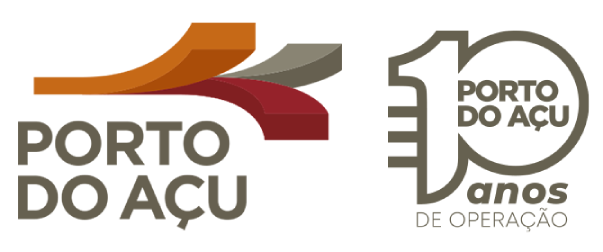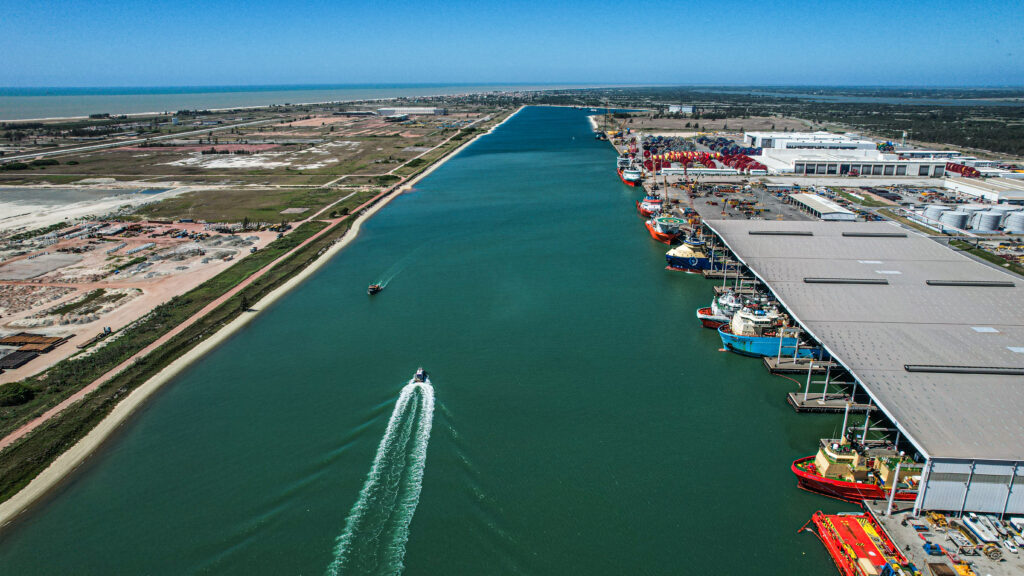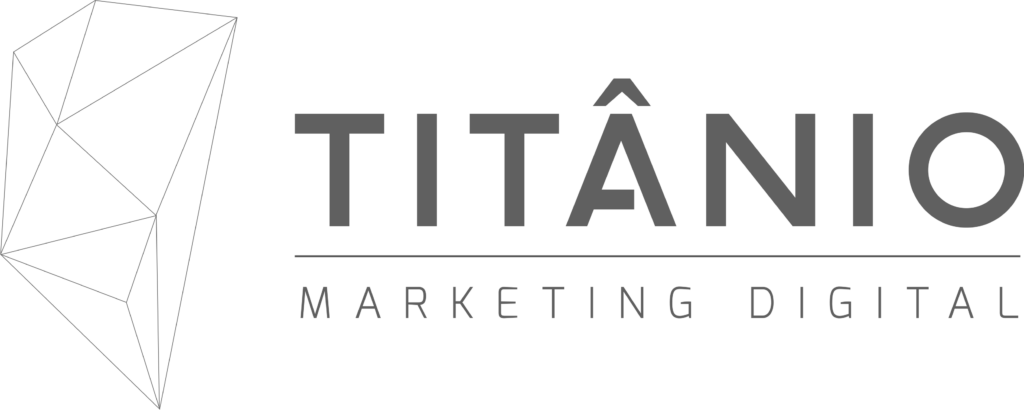The Port of Açu, the largest privately-owned port-industry complex in the country, is celebrating 10 years of operation, with around 430 million tons handled, more than 35,000 ship accesses and average annual growth of 32%. From the first movement of iron ore in 2014, to the inauguration of the various terminals in the following years, Açu is now being consolidated as the port of Brazil’s energy transition and a vector of social transformation for the north of Rio de Janeiro.
Throughout this decade, Açu has achieved solid results, standing out for its contribution to the regional economy: it operates 11 private terminals, has 22 companies installed and generates more than 7,000 jobs, 70% of which go to the communities of Campos de Goytacazes and São João da Barra.
“We’re a young port and we’ve managed to achieve in 10 years what many took 100 years to achieve. That’s why we’re so proud of the work we’ve done so far. We are recognized and have been gaining ground on the national scene, but the highlight of our journey is all the development we have managed to promote in the area of influence of our businesses, generating opportunities for the surrounding communities, boosting the region’s youth and local chains,” said Vinícius Patel, director of Port Administration at the Port of Açu.
In addition to encouraging the hiring of local labor, as part of the Port of Açu’s Employability Network strategy, the port complex has a series of initiatives focused on regional development, such as gateway programs for young local talent, training and entrepreneurship, and fostering the region’s innovation ecosystem.
Today, Açu already accounts for 40% of the country’s crude oil exports, as well as offering the largest support base for oil and gas platforms and having the outlet for the world’s largest mining pipeline, 529 km long, and potential 3GW generated by a natural gas-fired thermoelectric park. It is also the only sustainable pre-decommissioning point for platforms in the country, with an ongoing contract with Petrobras. In 2024 alone, there are already two units (P-26 and P-33) being prepared for sustainable decommissioning in Açu, which also intends to house Brazil’s first sustainable decommissioning hub. The port has already handled more than 6,700 ships this year, 15% more than in the same period last year.
T-MULT and the growth of agribusiness
In 2024, the Multicargo Terminal (T-MULT) expanded the portfolio of products shipped through Açu to include iron ore briquettes, soybeans and corn for export, as well as salt received by cabotage. The forecast is to close the year with 1.9 million tons handled and a projection of more than 2.5 million tons by 2025.
Açu is able to offer customized and efficient solutions to support the growth of agribusiness and Brazilian industry and is already a logistical alternative for importing fertilizers into the country and exporting grains. This year, Açu also carried out its first coffee export operation in big bags. In all, 15,520 tons of arabica and conilon varieties, mainly from producers in the south and east of Minas Gerais, Espírito Santo and Bahia, were shipped to Germany.
The Minas Port group has invested R$100 million in the construction of two warehouses attached to T-MULT to store grain (soy and corn), as well as announcing the construction of a fertilizer mixing plant for 2025. After expanding the storage area, T-MULT began work on expanding the quay, which will be completed by July 2025. The terminal’s handling capacity will reach 2.7 million tons per year.
Social and environmental responsibility
In addition to its importance to the local economy, the Port of Açu is committed to responsible environmental and social practices, establishing an open dialog with local communities and implementing actions aimed at preserving the environment. In partnership with companies in the port complex, Açu promotes workshops to develop and identify potential local suppliers. Today, 22% of the suppliers used by Porto do Açu Operações, the company that manages the complex, are companies from Campos dos Goytacazes and São João da Barra.
The Caruara Reserve, the largest private restinga preservation unit in Brazil, with 40 km² of preserved areas, studies and develops programs for the restoration of coastal and marine ecosystems, with emphasis on the production of restinga seedlings in its forest nursery, the largest dedicated to this ecosystem in the country, with the capacity to produce more than 500,000 seedlings a year. The Reserve also runs a sea turtle protection program, contributing to the preservation of endangered species and reinforcing the partnership between the Port of Açu and the local community in promoting sustainable environmental actions.
Energy transition
The Port of Açu remains steadfast in its mission to develop a port-industry with integrated, competitive and sustainable infrastructure. In 2024, two area reservation contracts were signed for the hydrogen and low-carbon derivatives hub, with the Norwegian company Fuella AS and the multinational HIF Global, as well as a Memorandum of Understanding (MoU) with Eletrobras focusing on the production of renewable hydrogen and its derivatives. In offshore wind, MoUs were signed with Corio Generation for the Açu structure to be used as support for future Corio wind farms in essential activities to guarantee energy generation at sea, and with the Belgian company Sarens to study logistical solutions for the transportation of components in the offshore wind energy chain. For the next decade, the goal is to become the port of Brazil’s energy transition, helping the world to reduce its carbon footprint and accelerating the country’s improvement.
Traveling exhibition
To commemorate 10 years of operation, the Port of Açu has set up a traveling exhibition with the history and milestones of the port complex. In addition to the project’s infrastructure, the exhibition explores the results achieved over the last decade and the social, environmental and economic transformation actions for the North of Rio de Janeiro. The structure is already open to visitors at Shopping Partage, in Campos dos Goytacazes, throughout December. It will then be transferred to the Old Town Hall and Public Prison of SJB and to the Caruara Reserve.



